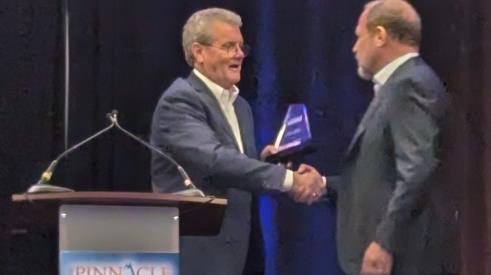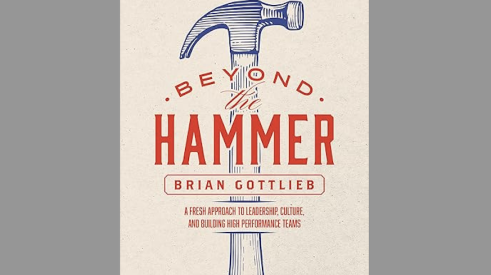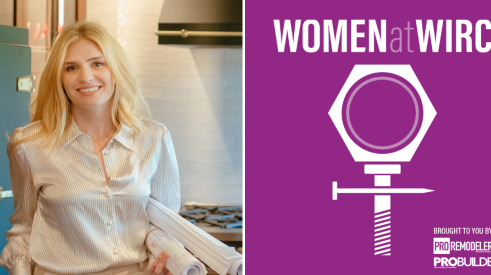 |
| Doug Dwyer Contributing Editor |
Do you remember when you first learned how to ride a bike? Did it take you out of your comfort zone? You bet it did. It was something new, exciting and scary. You probably wondered, like I did, if you would ever figure this out.
I remember my dad running behind me, holding the back of the bike seat, saying, "You can do it!" Then he let go. I got nervous and fell, and frankly did not want to do it again. The pressure of knowing my friends were able to ride their bikes and not wanting to be left behind while they had all the fun made me get back on my bike. After a few tries, and with my dad's encouragement, I finally got it, and it was amazing ... success!
How does this apply to business? If we are going to experience greater levels of success, we have to get out of our comfort zone and continuously expand that zone. That takes confronting our fears and believing we can learn new skills.
One lesson from this bike example: It helps to work with someone who's done it before. Better yet, learn from an expert. It speeds up the process of growth and our chances of success. How many of us would like to double our profits in two years versus taking 10 years? This expert could come from an association, a peer group or a franchise, or be a consultant or a successful businessperson in your town.
Another key element is the positive peer pressure of being part of a group, just like when our friends who already could ride bikes gave us determination to stick with it through the learning curve. How many of us would have learned to ride a bike without that peer pressure? Not many, because we would have just said, "Riding bikes is dumb." Translation: We are too scared. Fear of the unknown keeps us in our comfort zone. So does the conditioning of old habits.
Resistance to change and unwillingness to try new ways of doing things are what keep you and me from growing. That's not so bad until we realize that if we are not growing, our businesses will not grow to the level we desire. Ouch, that one hurts! Personal growth can be painful, because we have to confront our own doubts, fears and insecurities. The good news is, like learning how to ride a bike, others are successful doing it and you and I can be too!
Old habits die hard. Many of us were raised not to talk to strangers and only speak when you are spoken to. As businesspeople, we had to break this conditioning to succeed in sales and recruiting. Some people never break that conditioning. They say, "I wasn't raised that way," or "That's not right." In reality, they are just out of their comfort zone. What we are dealing with is our own resistance to change, not a divine truth of life, even when it feels that way.
Conditioning of habits is very powerful. In the 1970s, psychologist Martin E.P. Seligman introduced the theory of learned helplessness. As an example, say that a grown elephant dies in a fire, refusing to flee although it was only tied to a wooden stake with a rope. How could that be? When the elephant was a baby, the trainer put a large manacle with a heavy chain on the elephant, and connected it to a large stake driven deep into the ground. As a youngster, the elephant learned the hard way that it couldn't get away, and thus stopped trying.
What old chains of conditioning or fear hold you back from breaking through to the next level of success? Like the elephant in the story, we have the power to do things that have seemed impossible up until now.
Today, take a step in faith and watch those ropes (appearing as chains) of fear, doubt and insecurity break loose. Then you will find yourself, and your company, making a quantum leap forward. Now, that's leading by example!
| Author Information |
| Doug Dwyer is president and chief stewarding officer of DreamMaker Bath & Kitchen by Worldwide, one of the nation's largest remodeling franchises. He can be reached at doug.dwyer@dwyergroup.com. |
Add new comment
Related Stories
Brian Gottlieb Receives Remodeling Mastery Award
Presented by industry icon, Mark Richardson, the award celebrated Gottlieb’s extraordinary impact on remodeling
What's Beyond the Hammer?
Working with Brian Gottlieb on the book Beyond the Hammer provided a masterclass on how to build an aligned team
Real AI Applications For Remodelers
Tech-forward remodeler Michael Anschel shares how he uses artificial intelligence in his business.
How to Eliminate Boring, Languishing Meetings
Leff Design Build ensures maximum productivity and efficiency through these straightforward methods
5 Counterintuitive Strategies to Improve Your Business
Follow these strategies to inspire employees, instill trust, and beat the competition
Couple Act As Much More Than General Contractors
How LBR Partners uplifts and educates their Spanish-speaking trade partners
How to Train for and Run Effective Design-Build Meetings
On this episode of Women at WIRC, Morgan Thomas of LEFF Design Build shares how to maximize your time by creating a culture around effective, collaborative meetings
Pro's Picks: A Real-Time Project Communication and Management Tool
This remodeler says this product allows for easy, quick, real-time communication with team members in the field and in the office
How to Create a World-Class Remodeling Team
Great remodeling companies position themselves for the future with the right players
Everyone Should Have a Number: KPIs for Your Design Build Team
Measuring key performance indicators guides your team to success while creating accountability and ownership












